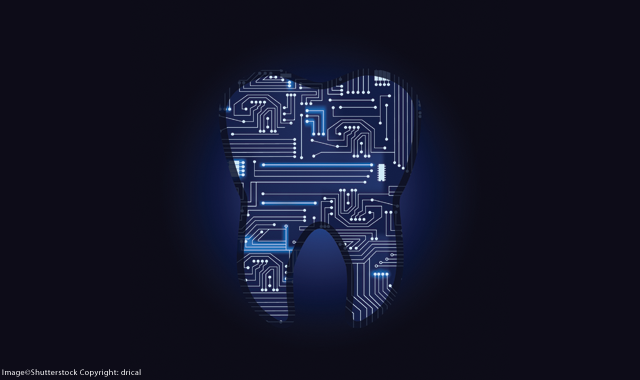Exploring a new era of collaborative dentistry
How software and technology are ushering the dental industry into the future.Over the last few decades our entire culture - from industry, education, entertainment and healthcare - has changed and evolved for the better due to the development of computer technology.

Over the last few decades our entire culture - from industry, education, entertainment and healthcare - has changed and evolved for the better due to the development of computer technology.
This includes the field of dentistry. Computers (hardware) have become more and more powerful and less expensive while the programs (software) on the computers are becoming more and more robust, e.g. computer graphic imaging (CGI).
Dentistry has benefitted from the incorporation of computer technology, as everything from communication (doctor/patient, doctor/lab and doctor/specialists); diagnostic options, treatment design, restoration manufacturing and practice management have assisted dental practices in becoming more and more efficient and streamlined, resulting in better predictability and higher quality care for their patients.
The typical collaborative digital workflow in a dental practice today begins with electronically communicating with the patient utilizing programs such as DemandForce (DemandForce, Inc.). This type of software allows for more efficient appointment scheduling and tracking and is fully automated as patients receive notification straight to their mobile devices allowing them to communicate back to the dental practice in real time. This and other communication software such as Podium (Podium Corp.), also allow offices to collaborate with their patients to improve their social media presence and generate reviews.
Trending article: 7 ways 3D printing is changing everything
One of the main reasons these products have become so successful has been due to the development of the smartphone. Smartphone technology led to the explosion of apps, which are tiny or watered down software programs that run on mobile devices. Programs that were developed for computers have been modified into an app version so doctor, labs, patients and specialists can utilize collaborative software while on the go and don’t have to be tethered to their desktop computers. An example of is would be a doctor who can have his practice management software app on his phone allowing him to check his/her appointment schedule without being in the office.
The core software for every practice is their practice management software such as PracticeWorks (Carestream) or Dentrix (Henry Schein), which besides handling the internal aspects of the practice such as charting, X-ray, accounts and appointments; can be very collaborative as elements of it can be shared with other disciplines, such as specialists, labs and insurance companies.
Where there has been a dramatic evolution of software in the dental industry over the last 10 years or so is in the diagnostic, design, impressioning and manufacturing side of dentistry.
For many years, dental professionals have relied on digital intraoral radiography, panoramic radiography and conventional tomography for diagnosis and treatment planning. These commonly used imaging modalities produce only two-dimensional and/or distorted images with superimposition of structures outside the area of interest.
There has always been a need for three-dimensional (3D) imaging, but the technology has only recently become readily available mainly because the technology has advanced plus the costs have come down. Cone Beam Computed Tomography (CBCT), e.g. GALILEOS (Dentsply Sirona) is compact in size, capable of producing high-resolution 3D imaging of hard tissues, and are compatible with computer-aided imaging software for improved diagnosis and treatment planning. These images can be merged with design software creating a very accurate and predictable collaborative workflow between all involved, i.e. dentist, surgeon and lab.
Related reading: 25 tools that improve the restorative workflow
Design software allows dentists and lab technicians the ultimate in collaborative therapy. This type of software allows the operator to create a digital design of anything from restorations to guided implant therapy with the option of taking this design and superimposing or merging it with a CBCT scan giving the entire team an extremely accurate 3D rendering of the proposed therapy.
Digital impressions can, and have, replaced analog impressions for those who adopt this technology as the scanners have become extremely accurate, cost have dropped and are easy to use; plus the impression software has also become extremely accurate and robust, e.g. the True Definition Scanner (3M). As with the CBCT imaging and the design software, the digital impression image can be merged with those software elements completing the entire digital diagnosis, design and preparation.
The last step in the digital workflow is to get the actual restoration fabricated and today a large portion of restorations, from crown and bridge to implant abutments are being milled by machinery. As milling units are becoming more and more precise along with the development of extremely strong and esthetic monolithic zirconia, such as Lava Esthetic (3M) or lithium disilicate, e.g. e.max (Ivoclar Vivadent) materials, laboratories can manufacture restorations very quickly, extremely accurately and inexpensively because of collaborative approach with the various hardware and software systems available.
Most of these systems and the companies that develop them have designed their products to be “open” architecture meaning that the different components to “talk” to each other or work in a collaborative manner. Systems that have or had “closed” architecture forced the dentist to only work with in the confines of that manufacturers system.
Technology is here to stay and is evolving every day, and that includes the dental world. Dentists need to stay abreast of the technology and work with collaborative systems to provide the optimum care for their practice. Careful research by the dentist is necessary before purchasing these systems to make sure they fit into the workflow and financial structure of the practice along with taking into consideration how long any of these systems will be replaced or upgraded as newer technology emerge. λ